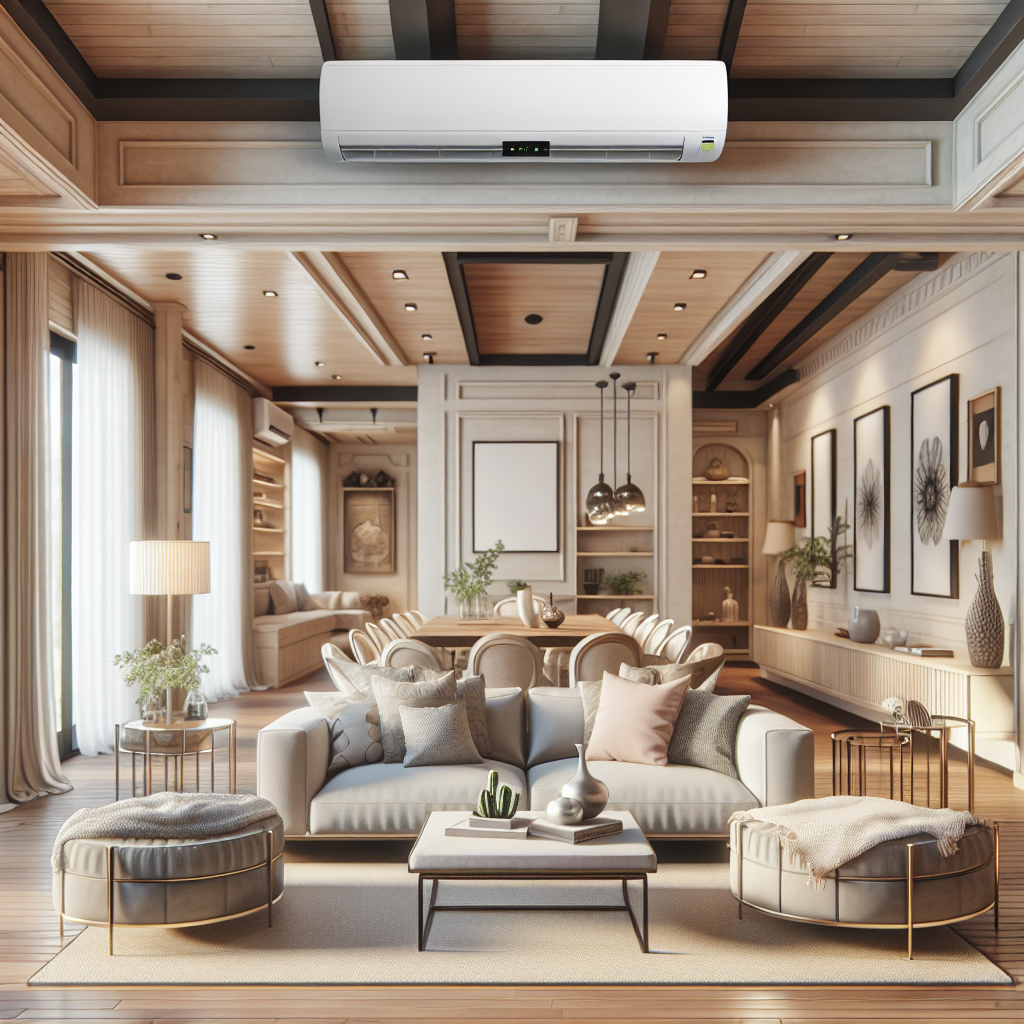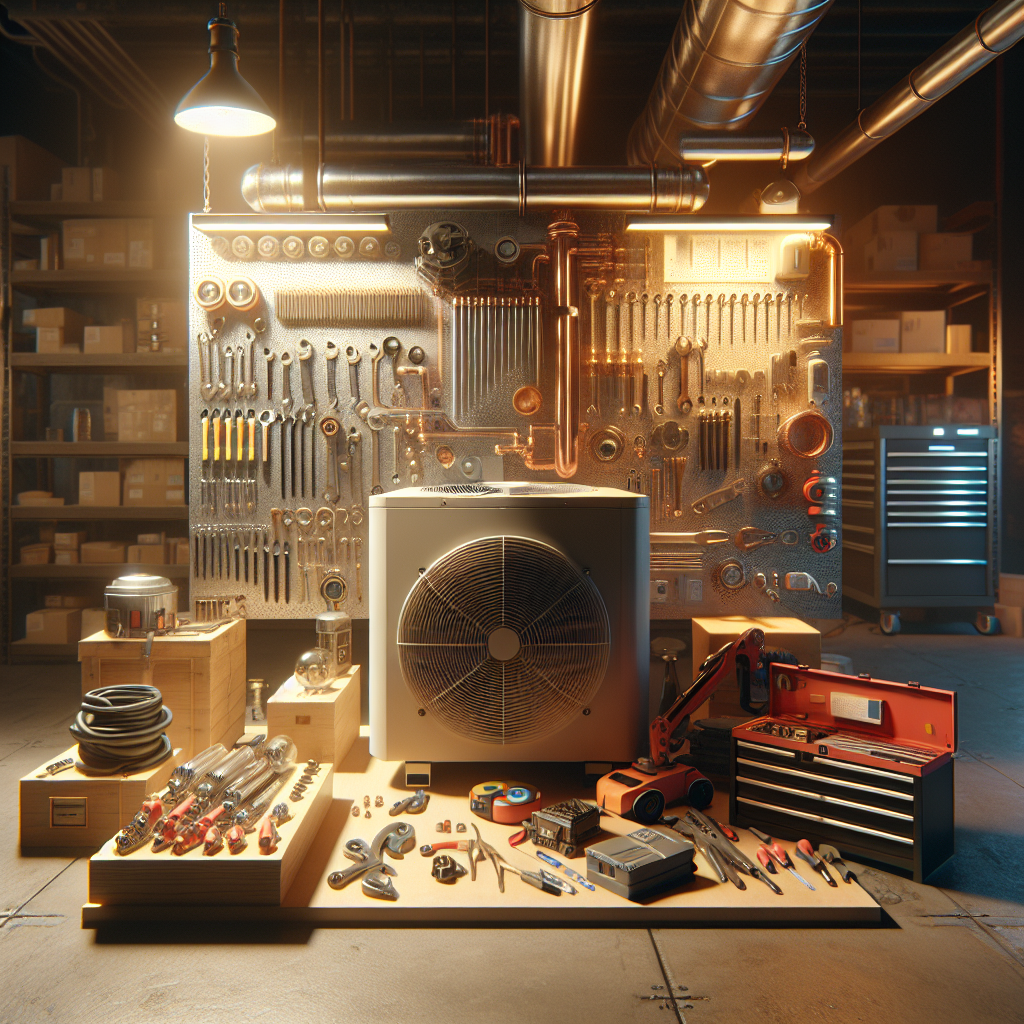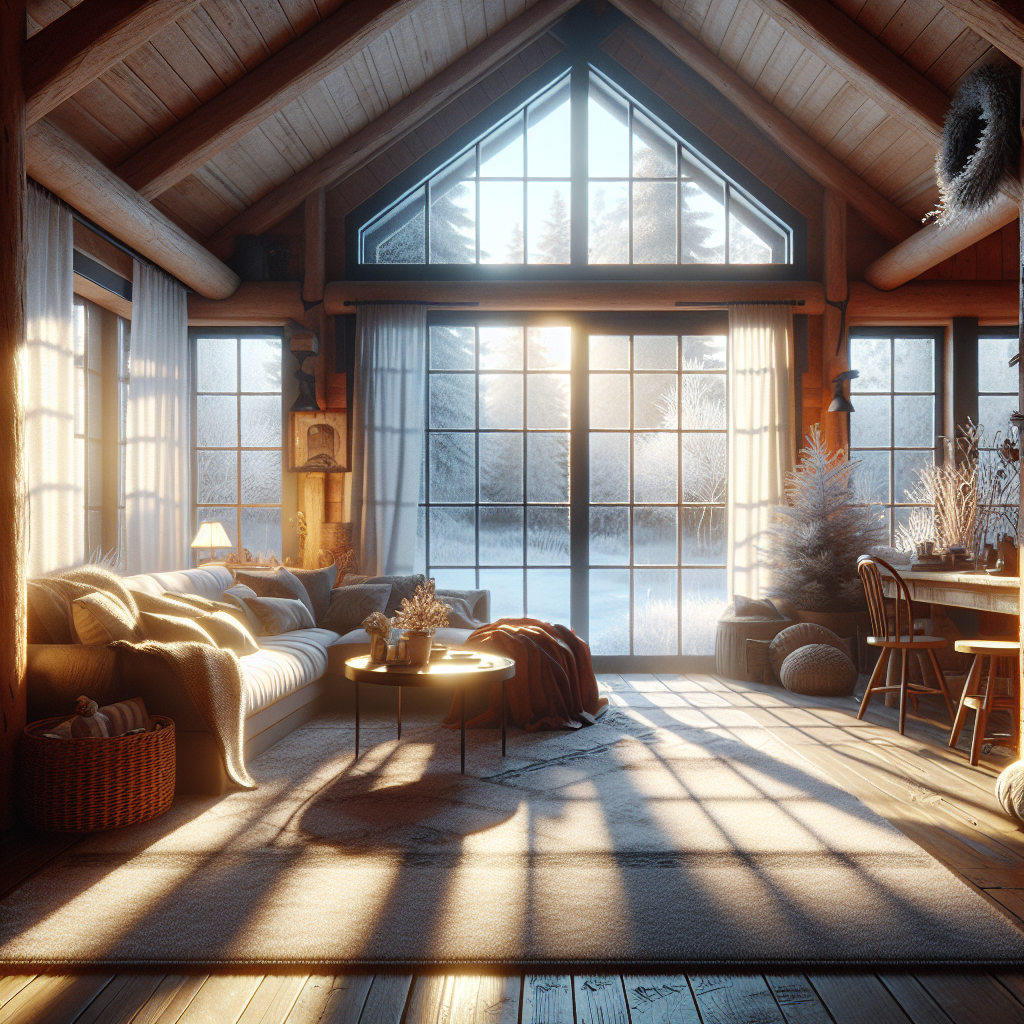Finding the right fit for your home’s cooling needs is essential, especially when dealing with the heat in a spacious 2000 sq ft environment. You want to ensure your space is comfortable without going overboard on energy bills.
The cooling capacity, measured in BTUs, plays a significant role here.
Typically, you’ll need roughly 20 BTUs for each square foot of living space.
So, if you’re looking to keep things cool, aiming for around 40,000 BTUs should hit the sweet spot.
But wait, don’t just stop there! There are plenty of other factors to consider when determining your exact needs. The number of windows in your home, how well your insulation is holding up, and the size of your air conditioner, particularly its cooling capacity measured in BTUs relative to your home’s square footage and energy efficiency, all play a crucial role in determining your overall comfort.
Click here to learn more about: prices.html
Understanding Cooling Capacity For Your Home
Now that you’ve got a grip on the basics of cooling needs, let’s look at what your specific space requires. Every home has its unique touches, which heavily affect the cooling capacity needed to keep it comfy.
When figuring out what works best for you, consider things like room size, how well your insulation operates, and your everyday usage patterns. Your HVAC system’s efficiency matters a lot here; for instance, larger rooms might need a stronger unit to keep the atmosphere cozy.
Central air systems are a great choice, but don’t forget how often each room gets used. High-traffic areas usually need a bit more attention for proper temperature control and airflow. Choosing the right air conditioning unit not only helps you manage energy consumption but also keeps your comfort level high when those summer temperatures spike. Whether you’re leaning towards a traditional HVAC option with a high SEER rating or checking out the perks of a ductless system, the right decision can really make a difference in keeping your home snug and avoiding a hefty electric bill.
Plus, keep an eye on factors like heat gain and ambient temperature when looking at your overall comfort zone. Getting an HVAC technician to do a home assessment can make this process smoother, helping you pick the right system size for your needs while maximizing long-term savings and cost efficiency.

What Is The Ideal BTU Rating
Understanding your home’s cooling capacity is key to maximizing comfort and efficiency. The ideal BTU rating helps you find that sweet spot, aligning energy efficiency with the specific needs of each room.
If you’ve ever been curious about how cooling units operate, a British Thermal Unit (BTU) is the measure you need to know. It tells you how much heat energy an air conditioner can remove from a space in one hour. In simpler terms, the bigger the area you want to cool, the higher the BTUs you’ll need to tackle the heat load and keep things comfortable.
To determine the right cooling power for your home, start by measuring your room size. For example, a 200-square-foot area usually needs around 7,000 BTUs. But remember, this can vary based on several things, like heat gain, ambient temperature, climate zone, and the number of gadgets that generate heat, like TVs or computers.
Don’t forget to consider how many people typically use the space. More occupants mean more body heat, which you’ll want to include in your BTU calculations. If your home has good insulation and efficient airflow, you might be able to choose a lower BTU rating without compromising comfort level. On the other hand, if you’ve got heat coming in from windows or less-than-great insulation, you might need a higher rating to keep things cool.
Using a sizing calculator or getting in touch with an HVAC technician is a smart move to nail down the right BTU needs for each room. This way, you can ensure your cooling needs are met without wasting energy. Whether you’re considering a central air system or a ductless unit, selecting the right BTU rating is crucial for maintaining comfort while avoiding oversized or undersized units, which can lead to inflated electric bills and poor AC performance.
Determining Square Footage For AC Needs
Once you get a handle on cooling capacity and BTU ratings, the next step is figuring out how to measure your space accurately. Knowing your home’s dimensions isn’t just about math; it’s super important for picking the right residential AC that keeps you cozy without driving up your electric bill.
Start by measuring the length and width of each room. Multiply those two numbers to get the square footage for each area. Don’t forget to add up these figures for your total space. If you have an open floor plan, treat it as one continuous area to keep things simple.
This step is vital when looking at energy consumption and figuring out how much cooling you need for your entire living space. And don’t skip the ceiling height! Higher ceilings mean there’s more volume to cool, which can influence the system size you’ll require for steady temperature control. Using a sizing calculator can be a smart move in finding the right residential AC system size, letting you find a good balance between energy efficiency and your comfort level.
Keep in mind other factors too, like the climate zone you live in, how well your home is insulated, and seasonal usage habits. Good insulation helps keep your comfort zone intact, while poor insulation can increase heat gain, pushing you to go for a more powerful cooling unit. Ultimately, whether you’re leaning toward a central air setup or a ductless system, accurate measurements and careful calculations can save you money now and in the future. This way, you can steer clear of both oversized and undersized units that could hurt AC performance.
How Energy Efficiency Affects Cooling
Alright, let’s break down how energy efficiency can impact your cooling costs. Understanding BTU ratings and measuring your home’s square footage is just the start. Now, it’s time to see how energy efficiency plays a big role in keeping you comfortable while saving you some cash on that electric bill.
Finding the right balance between comfort and efficiency is key. When you choose energy-efficient systems, you’ll likely notice lower monthly expenses over time. It’s a small change that can lead to significant savings in your budget.
One crucial thing to look at is the SEER rating, short for Seasonal Energy Efficiency Ratio. This rating tells you how well an air conditioner works. Simply put, the higher the SEER, the better it is at saving energy and fulfilling your cooling requirements. With the right knowledge, selecting the best system is easier, making sure your space stays comfy without breaking the bank. If you’re planning to install a new air conditioner, don’t forget to consider your air flow rate and overall cooling needs for optimal home cooling.
Air Conditioning Efficiency
- Higher SEER ratings mean better energy efficiency, which leads to lower energy bills.
- Opting for an energy-efficient cooling system can greatly reduce your monthly utility costs down the road.
- Proper unit selection and good airflow management are essential for meeting your specific cooling requirements.
- Investing in energy-efficient technology boosts your comfort level and helps the environment too!
HVAC System Size: Why It Matters
Now that you get how energy efficiency and cooling needs fit together, let’s chat about why having the right HVAC system size is crucial. Choosing a suitable size for your heating and cooling needs can really boost your comfort level while also keeping your energy consumption in check.
When everything is dialed in just right, you end up with a cozy atmosphere that helps save money on energy bills while keeping things perfectly balanced. An oversized unit might short cycle, meaning it turns on and off too often, which can lead to higher energy costs and poor humidity control.
This constant on-off cycle can put extra strain on your system, causing it to wear out quicker and leading to pricier repairs down the line. Plus, too much cycling can definitely throw off your indoor comfort, especially when the ambient temperature is changing. On the other hand, a system that takes into account efficiency ratings, room size, cooling requirements, and seasonal usage can enhance performance and energy usage, giving you a more reliable way to stay comfortable.
In the end, it’s smart to work with an HVAC technician for a detailed home assessment. They can help you do a load calculation to find the ideal system size based on your square footage and other important factors. This not only keeps you away from those frustrating oversized and undersized units but also makes sure you’re getting the best bang for your buck. So, when it’s time for installation, remember that the right tonnage and airflow rate can significantly impact your system’s overall AC performance and your electric bill.
Are Ductless Systems Right For You
Finding the right HVAC system can really make a difference in your home. If you value comfort and flexibility, ductless systems might just be the ticket!
Brands like Goodman provide ductless models that shine in spaces lacking ductwork. This opens up exciting options for your home cooling needs.
What’s really impressive about these systems is their energy efficiency. Picture reducing your electric bill while keeping your home cool and comfy! With high SEER ratings, ductless units not only bring longterm savings but also allow you to control the temperature in different rooms. No more fussing over the thermostat!
Thinking of remodeling or adding a room? Ductless systems are a fantastic choice. They easily fit into various setups and come from trusted brands like Frigidaire, Carrier, Lennox, and Goodman.
Ductless Air Conditioning Systems
- Ductless air conditioning systems can lead to significant savings thanks to their high energy efficiency and impressive SEER ratings.
- These systems allow for customized temperature control room by room, enhancing your comfort level and minimizing thermostat arguments.
- They’re perfect for homes without any existing ductwork, making them adaptable for renovations or new spaces.
- Popular brands like Goodman, Frigidaire, Carrier, and Lennox have a wide range of ductless models to fit your home’s needs perfectly.
Evaluating SEER Rating For Savings
Now that we’ve chatted about how ductless systems can really enhance your home comfort and energy usage, let’s dive into SEER ratings and why they are key when you’re picking out the right system. Understanding these ratings can genuinely help you save some money while keeping cool.
SEER, or Seasonal Energy Efficiency Ratio, shows how well your HVAC system does during the cooling season. A higher SEER rating means better energy efficiency, which usually translates to lower energy bills. For example, if you’re considering a system with a 16 SEER rating, that’s going to outperform one with a lower number—and we’re not talking about just a few bucks! It could lead to savings of up to 33% on cooling costs.
But how do you make sense of these numbers? Let’s keep it straightforward: investing in a unit with a better SEER rating may cost a little more upfront, especially with popular brands like Trane or Carrier, but the long-term savings can be quite rewarding. When on the hunt for your perfect HVAC fit, don’t forget about energy-efficient options like Trane’s split system or a smaller window unit, particularly if you’re dealing with specific square footage or unique cooling needs.
Besides cost savings, a higher SEER rating can lead to enhanced overall performance and comfort levels. It’s important to assess how the chosen system meshes with your home’s insulation and climate zone, as this helps manage heat gain and ensures proper airflow. Teaming up with an HVAC technician during your home assessment can give you insights into load calculations, making sure you pick a system suited to your residential needs. Remember, good temperature control can really make a difference, keeping humidity in check and your electric bill under control.
Calculating Heat Load In Your Space
Now that we’ve pointed out how important energy efficiency is for keeping your home comfy, knowing how to calculate the heat load in your space is key for choosing the right system. This isn’t simply about popping in an air conditioner and calling it a day; a smart approach to managing temperature will make a big difference.
First off, take a close look at your insulation. It acts as your home’s best defense against unwanted heat, helping to maintain that cool atmosphere you’re after.
Next, consider your windows—they can be sneaky culprits. Large windows might let in more warmth than you realize, so it’s wise to evaluate how they might affect your cooling requirements.
And don’t overlook kitchen appliances! Items like your oven and fridge can generate more heat than you’d expect, impacting your overall comfort level. By factoring in all these elements, you can avoid the mistake of choosing an oversized unit, which not only wastes energy but can also create humidity problems.
So, how do we actually calculate heat load? It’s all about BTUs—British Thermal Units—which indicate the cooling capacity you’ll need to control humidity effectively. Be sure to account for every variable, like refrigerant types, thermostat settings, your comfort zone preferences, and humidity control specifics. An oversized unit can lead to poor airflow and many forms of discomfort, so getting your sizing right is essential.
Lastly, working with an HVAC technician during a home assessment can help lead you through a detailed load calculation. The right calculations ensure that your new system meets your home’s insulation and climate zone factors, as well as aligns with your long-term energy consumption goals. After all, having proper air distribution can significantly influence AC performance and, by extension, keep your electric bill in check!
Comfort Level: Avoiding Oversized Units
Let’s chat about how picking the right air conditioning system can really improve your comfort. Sure, it might be tempting to opt for a larger unit, but an oversized model can actually create more problems than it solves.
When an air conditioner is too big, it cools your space way too fast. This quick cooling means it doesn’t run long enough to properly handle humidity levels. The result? An uncomfortable, damp environment that’s not just a hassle but also cranks up your energy bills since the system cycles on and off more often than it should.
Finding that perfect size for your system is crucial. This is where a skilled HVAC technician can really help. They’ll evaluate your specific cooling needs and suggest a unit that fits your home perfectly, rather than just pushing for the biggest option.
And don’t forget about maintenance! Keeping your cooling unit well-maintained is key to ensuring it runs efficiently. Regular tune-ups can boost AC performance and save you big bucks on repairs later. Plus, it makes sure your system is up to the task when those hotter days roll in, especially if you’re worried about an undersized unit not being able to handle your cooling needs.
So, as you weigh your choices, think about how essential it is to aim for the right size. Whether you’re considering a central air setup, a ductless option, or something else, balancing efficiency and effective cooling will lead to better comfort in your home. With the right strategy, you’ll create a cozy space that won’t break the bank while addressing all your residential needs.
What Are Your Home Cooling Requirements
Building on our chat about avoiding oversized units and figuring out heat loads, picking the right air conditioning system really hinges on understanding your specific cooling needs. It’s more than just choosing a brand—it’s about finding a solution that fits your lifestyle and your home’s unique situation.
First up, let’s discuss your local climate. The heat and humidity levels where you live play a big part in figuring out the cooling capacity you’ll need for the best comfort. In regions where it gets especially hot, finding a system that boosts energy efficiency can help keep that electric bill down.
Next, think about how you actually use your space. Do certain rooms soak up more sun than others? Or do you hang out mostly in one area? Checking out these factors not only sheds light on your residential needs but also highlights why effective airflow management is key. By customizing your HVAC system based on these insights, you can significantly improve your comfort level while saving money on installation costs and energy.
| Factor | Importance |
|---|---|
| Local Climate Conditions | Determines the necessary cooling capacity |
| Sun Exposure in Rooms | Affects temperature variations in different areas |
| Usage of Space | Identifies which areas need more cooling |
| Cost Efficiency | Helps manage electric bills and installation costs |


